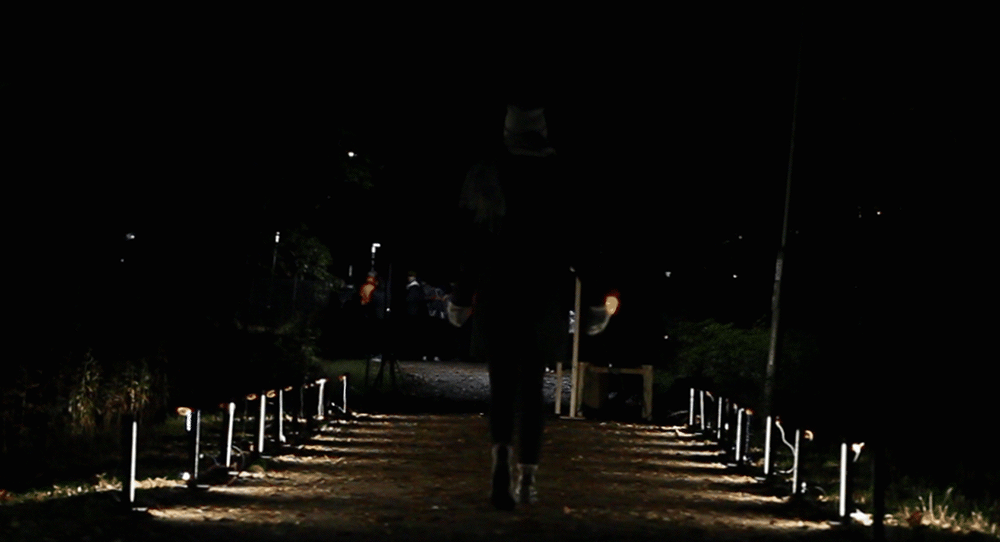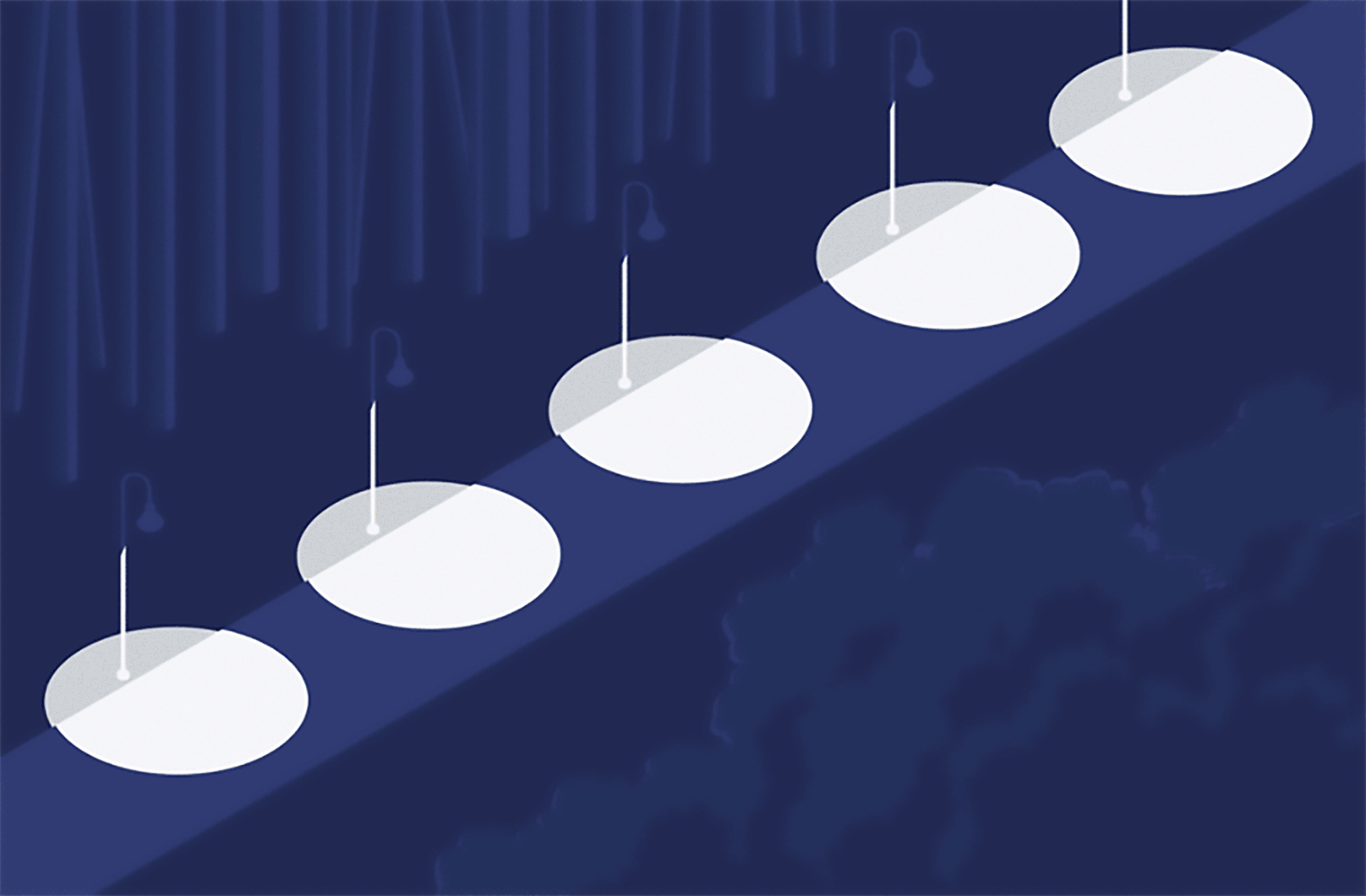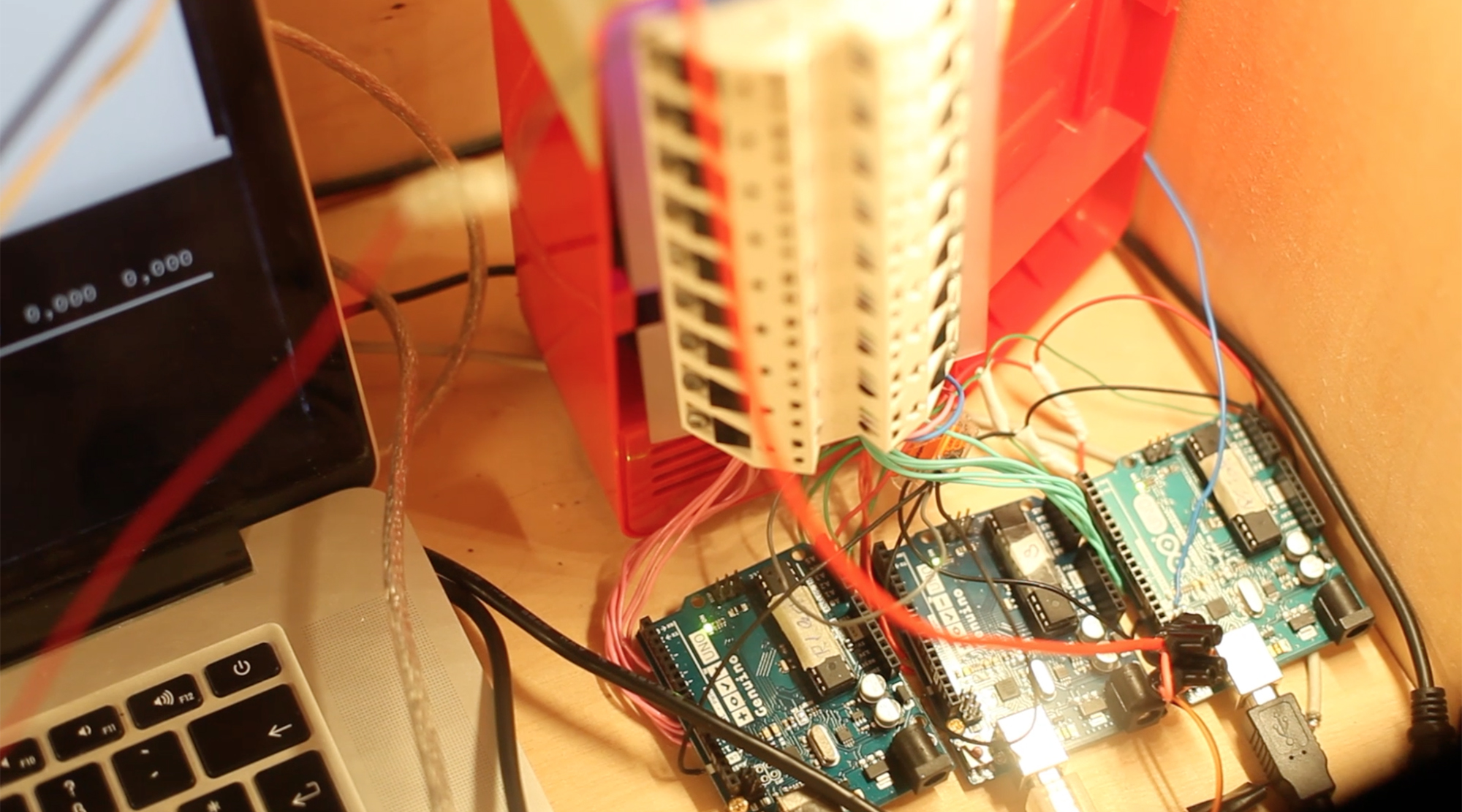light up the dark
A concept for public lighting /
![]()
A concept for public lighting /
an installation that transforms footsteps into lightwaves

Stockholm is located in a part of the world where darkness can make up more than 75 % of a day during winter. The need for artificial light is an essential part of society both for the function of ‘lighting up the dark’ and through its aesthetic qualities. This light installation has been developed for a selected pathway that connects schools, residential areas and local shops to a well-frequented train station where residents have reported feelings of distress, fear and a lack of safety due to the space's 'darkness'. The municipality of Botkykra, Stockholm's län, has therefore approached us to create an alternative proposal to replace the public lighting that is already in-place.
How can the feeling of isolation between the path, its surroundings and the pedestrians be broken? As an answer to this question, we facilitated a dialogue between the path, the space, and the people walking by through the means of light: During the day, the traffic on the walkway was recorded by vibration microphones on the ground. When the sun had set, these audio signals were translated into light: mirroring people, bikes, or even deer that crossed the path earlier. The path, therefore, told its own story of the day gone by, a story created by the community during the day, told to the pedestrians at night.
On a second level, by radically re-adjusting the quality and amount of light on the path, as well as spreading and redirecting its direction, the pathway went from being a separated entity within the dark to becoming visually integrated with its surroundings and thus dissolving the 'wall of darkness' around the path that has been perceived before.
How can the feeling of isolation between the path, its surroundings and the pedestrians be broken? As an answer to this question, we facilitated a dialogue between the path, the space, and the people walking by through the means of light: During the day, the traffic on the walkway was recorded by vibration microphones on the ground. When the sun had set, these audio signals were translated into light: mirroring people, bikes, or even deer that crossed the path earlier. The path, therefore, told its own story of the day gone by, a story created by the community during the day, told to the pedestrians at night.
On a second level, by radically re-adjusting the quality and amount of light on the path, as well as spreading and redirecting its direction, the pathway went from being a separated entity within the dark to becoming visually integrated with its surroundings and thus dissolving the 'wall of darkness' around the path that has been perceived before.

The lighting:
The pathway in Botkyrka was already lit by bright halogen lanterns. While their strong and cold lamps shed light on the pathway, its glare and harsh contrasts isolated the path completely from its surroundings and had it be framed by a 'wall of darkness', resulting in the reported feelings of fear and discomfort.
As an alternative, we radically reduced the amount of light, which – in relation to the dark surroundings – resulted in much better sight. By changing the sources' position to the ground level and spreading an additional light directed towards the surroundings, the path was visually integrated with its environment: without the unnecessary glare and due to the evenly fading brightness the spatial isolation was lifted.


The research process included an intense exploration of the space, research with the residents and and experimentation with different lighting situations on site. The images above show a comparison of face recognition in the harsh lantern's light (left) and our proposal (right).

The installation:
The concept was presented to the residents and representatives of the municipality in an interactive installation, in which we invited visitors to hear the recordings the lights react to, test the functioning of the vibration microphones which create the recordings and take a look at the technological core that transforms the footsteps into light.
The concept was presented to the residents and representatives of the municipality in an interactive installation, in which we invited visitors to hear the recordings the lights react to, test the functioning of the vibration microphones which create the recordings and take a look at the technological core that transforms the footsteps into light.






Stockholm, 2017
Realized through processing, arduino and raspberry pi, several vibration microphones, a lot of cables and LED stripes.
The beautiful soundtrack in the video is "My Digital Compass" by "Blue Dot Sessions", licensed under creative commons.
Realized through processing, arduino and raspberry pi, several vibration microphones, a lot of cables and LED stripes.
The beautiful soundtrack in the video is "My Digital Compass" by "Blue Dot Sessions", licensed under creative commons.
Partnership:
Created for the municipality of Botkyrka, Sweden.
It was a pleasure to collaborate with Fabian Bender!
Created for the municipality of Botkyrka, Sweden.
It was a pleasure to collaborate with Fabian Bender!
exhibited at:
Exhibited on October 30th 2017 in Botkyrka, Stockholm's län.
Exhibited on October 30th 2017 in Botkyrka, Stockholm's län.